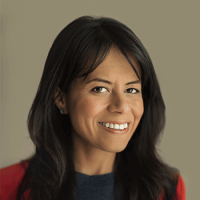Mexico City Will Become A State
Earlier this year, Mexico City became the 33rd state of Mexico's federation. This change is fundamental for investors and for all those engaged in trade relationships with Mexico.
Earlier this year, Mexico City became the 33rd state of Mexico's federation. This change is fundamental for investors and for all those engaged in trade relationships with Mexico.

Few outside of Mexico know that earlier this year, Mexico City became the 32nd state of Mexico’s federation. Mexico’s federal constitution was reformed in January of 2016 to allow for the emergence of Mexico City state (CDMX), an entity with its own congress, constitution, local governments, and fiscal rules.
This change is fundamental for investors and for all those engaged in trade relationships with Mexico. It implies that the country’s most important city, the one that receives 30% of all foreign investment (SE, 2015), and produces about 21% of all Mexico’s gross total product (INEGI, 2013a), will change its rules of operation, with local authorities having much more autonomy from the federal government and more agency than ever before.
Up until early this year, CDMX’s official name was Distrito Federal (Federal District, DF). DF was a territory that hosted Mexico’s federal administration but lacked the political rights of other Mexican states. The mayor of DF, for example, was elected by popular vote (only since 1997) but could be removed by the senate – a faculty that the Mexican senate tried to use, with much controversy, in 2005 (Excelsior, 2016). Furthermore, basic decisions by DF’s mayor needed to be authorized by Mexico’s President, such as selecting Mexico City’s chief of police or deciding who would be the Attorney General. By changing from DF to CDMX, Mexico City’s citizens will now have a mayor able to select its own team without federal approval, a local government more autonomous in the use of its fiscal resources, and a political elite without fear of removal by the senate.
Turning DF into CDMX is colossal legal task. The first step towards consolidating CDMX is to create its own constitution, a complete legal framework to define the rules of the game. Such a major process has not taken place in Mexico since 1974 when the states of Quintana Roo and Baja California Sur were created. Indeed, the emergence of a whole new state is extremely uncommon in politically developed countries like Mexico.
The rules of the game that CDMX sets will be critical in at least three areas.
First, fiscal transparency. DF was known for being one of the least transparent entities in terms of expenditures, debt, and income. Authorities of DF did not disclose basic information such as details about the number of public state employees they had, their salaries, and the size of their pensions (IMCO 2015). Critical information for financial health, such as the type of debt that Distrito Federal had acquired, its level, and what instruments constituted it were also not public information (IMCO 2015). With the proper regulation, the creation of CDMX could be a solid step towards a more transparent Mexico. The figures are impressive. It is estimated that CDMX has about 214 thousand state government employees (not including public teachers and doctors) (ENOE, 2015), and the largest public debt (6.8 billion pesos) of all Mexican states (SHCP, 2016).
Second, the development of CDMX’s legal framework will also be important for its potential to create a more progressive taxing scheme. DF collects about 33% of all of Mexico’s property taxes (INEGI, 2013b), and is home to at least 8.3% of all Mexican households (INEGI, 2010). As a result, the form that CDMX’s tax system takes will be critical, not only to increase tax collection in Mexico City, but in the country as a whole. Distrito Federal is currently ruled by the left which makes some believe that its new taxation system could be much more progressive than in other states.
Finally, the development of CDMX’s legal framework could also be a critical moment for developing a solid environmental policy agenda. With Mexico City facing pollution levels that have not been seen since the 90’s, popular outrage is pushing for greener policies. Adequate local legislation could create much required pollution industrial regulation, reduce the number of cars in circulation, and improve investments in public transportation. A new CDMX could create congestion laws, heavily tax the use of cars, and increase investments in public spaces and connectivity.
Yet, the real impact that the creation of CDMX will have will not be fully known until its constitution is created, a process that is taking place as we speak – with much controversy.
The current mayor of Mexico City, Mr. Miguel Ángel Mancera, has been given the mandate to present a first draft of the constitution. To develop the draft, Mr. Mancera selected a group of 29 experts and a team of 18 external advisers. They have been working since February, meeting every Tuesday, with the goal of having a first draft to present after about six months of work. All experts are being directed by Mr. Porfirio Muñoz Ledo, a well-known politician whose political career includes being the founder of the main leftist party in Mexico (PRD), Mexican ambassador to the European Union, and a presidential candidate in 2000. The group of external advisers seems less clearly solid, including not only academics and experienced public servants, but also radio and twitstars. A radio commentator with 1,555 thousand twitter followers, known as “El Sopitas,” and a sports announcer and radio anchor known as “El Rulo” are among the group.
Mexico’s civil society, increasingly involved in shaping Mexican politics, has also been quite engaged in this process. Several citizen forums are taking place all around the city to discuss the basic content that the constitution should include. Forums like “Foro Ideas CDMX” and “Elección de la Asamblea Constituyente” have been developed. Citizen initiatives like the civil association “Tu Constituyente” have tried to become elected members of the “Constituent Assembly” and have become pretty vocal in the public discussion of the issues (Tu Constituyente was not successful in gathering the 76 thousand signatures required to be part of the Asamblea, only gathering 6 thousand). And on social media, hashtags like #TuConstituyente and #ConstitucionCDMX populate different discussions, creating furious debates about the “rights” that the constitution should protect.
In September of 2016, Mr. Mancera will present the final draft to a “Constituent Assembly,” a group of a hundred legislators specially appointed to discuss, change, and approve the document. The “Constituent Assembly” will be made up of 40 appointed members and 60 members elected by popular vote in an open election in which all of CDMX’s citizens will be able to vote. As a result, Mexico City is preparing itself to hold what would probably be the most important political event in its history. The election will take place on June 5th with a cost of 117 million pesos (INE, 2016). The appointed members will be 14 federal deputies, 14 senators, 6 congressman appointed by Mr. Mancera, and 6 by Mexico’s President. It is expected that as many as 7 million citizens will vote in June to define who will integrate the “Constituent Assembly.”
Once the “Constituent Assembly” is selected, the constitution will be required to be approved on January 31, 2017, so that by 2018 CDMX is completely in place.
We must keep a close eye on this process. The creation of CDMX implies many political, administrative and economic changes that will affect not only its citizens, but potentially all those who have commercial or political relations with CDMX. And these will be many. Mexico City is made up of 16 boroughs known as “delegaciones” (now called “demarcaciones”) which, in many cases, are economically larger than entire Mexican states. According to Mexico’s economic census, Delegación Iztapalapa, for example, hosts 73 thousand firms;—this is more than the state of Querétaro (69 thousand firms), and more than the state of Campeche (29 thousand) and Colima (32 thousand)combined (INEGI, 2013a). Another delegación of CDMX, Cuauhtémoc, is responsible for producing 5.7% of all of Mexico’s gross total product, even though the delegación only has 0.4% of the country’s population (INEGI, 2013a), (CONAPO, 2015).
Soon we will have clarity with respect to how, and who, will be affected or benefited by all these enormous political changes. Given the large size and impact of Mexico City, the change we are seeing is perhaps the most fundamental political change that the country has had since its revolution, and much more akin to the creation of many powerful states, rather than the creation of a single new one.
REFERENCES
CONAPO. (2015). Datos de proyecciones. Consejo Nacional de Población : http://conapo.gob.mx/es/CONAPO/Proyecciones_Datos
ENOE. (2015). Encuesta Nacional de Ocupación y Empleo . INEGI: http://www.inegi.org.mx/est/contenidos/Proyectos/encuestas/hogares/regulares/enoe/
Excelsior. (2016). AMLO cumple seis años de haber sido desaforado; sigue en campaña. (A. Páramo, Productor) Obtenido de http://www.excelsior.com.mx/node/728035
INE. (2016). Instituto Nacional Electoral: http://www.ine.mx/archivos3/portal/historico/recursos/IFE-v2/DS/DS-GacetasElectorales_INE/2016/Gaceta-010/GE_010_130.pdf
INEGI. (2010). Censo de Población y Vivienda . Instituto Nacional de Estadística y Geografía: http://www3.inegi.org.mx/sistemas/TabuladosBasicos/Default.aspx?c=27302&s=est
INEGI. (2013a). Censos Económicos 2014: http://www.inegi.org.mx/est/contenidos/proyectos/ce/ce2014/
INEGI. (2013b). Finanzas públicas estatales y numicipales. Instituto Nacional de Estadística y Geografía: http://www3.inegi.org.mx/sistemas/tabuladosbasicos/tabtema.aspx?s=est&c=27565
SE. (2015). Inversión Extranjera Directa por Entidad Federativa. Secretaría de Economía: www.economia.gob.mx/files/comunidad.../ied/Flujos_IED_entidad_federativa.xls
SHCP. (2016). Estadísticas Oportunas de Finanzas Públicas. Secretaría de Hacienda y Crédito Público: http://www.shcp.gob.mx/POLITICAFINANCIERA/FINANZASPUBLICAS/Estadisticas_Oportunas_Finanzas_Publicas/Paginas/unica2.aspx


The Mexico Institute seeks to improve understanding, communication, and cooperation between Mexico and the United States by promoting original research, encouraging public discussion, and proposing policy options for enhancing the bilateral relationship. A binational Advisory Board, chaired by Luis Téllez and Earl Anthony Wayne, oversees the work of the Mexico Institute. Read more
